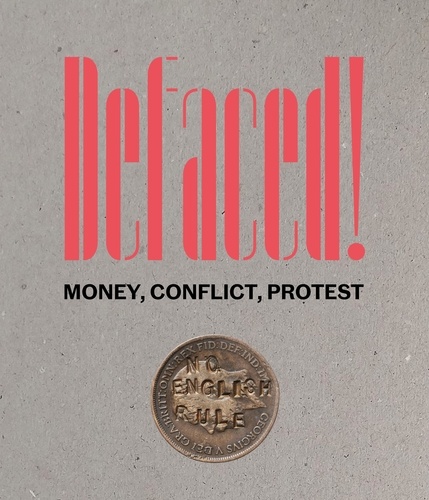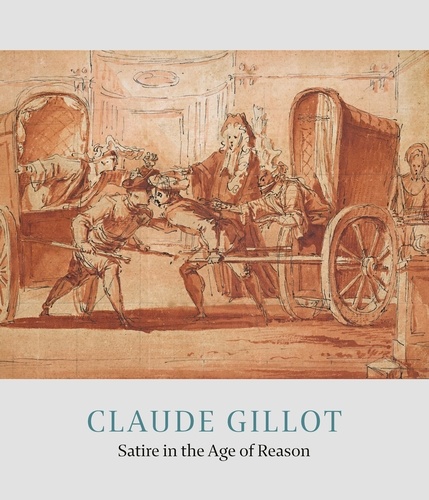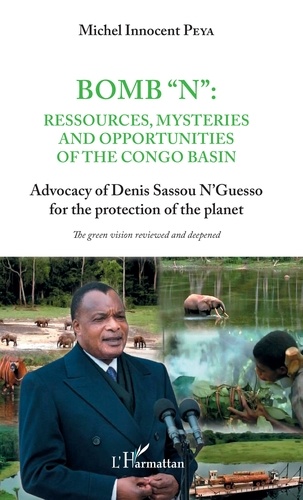Myriam Antaki
Extraits

Monographies
Defaced! Money, Conflict, Protest
This fully illustrated catalogue is the first of its kind to examine the relationship between money, power, resistance and dissent. It accompanies major exhibitions at The Fitzwilliam Museum in Cambridge and the Art Gallery of Ontario in Toronto. War, revolution and protest are defining themes in all periods of world history, shaping national identities and influencing material and visual culture in myriad ways. The ubiquity of money makes it a powerful vehicle for diseminating the messages of the state to the public, but the symbolic and nationalistic iconography of currency could also be subverted or mutilated in powerful acts of defiance, rebellion and propaganda. Beginning in Britain in the wake of the American and French Revolutions, the exhibition explores the political and social tensions present in society, and communicated through the production or defacement of money, over the past 200 years. It contrasts the use of money by the radicals of the nineteenth and early twentieth century, such as Thomas Spence, and the Suffragette movement, with the money produced by European empires as they scrambled to dominate the rest of the world. The currency histories of the two World Wars reveal the subversion of the very nature of what money is, and highlight the role of money as the tool of occupation, imprisonment, resistance and remembrance. The coins countermarked during the Troubles in Northern Ireland hint at the polarised nature of political discourse and sectarian violence. The exhibition culminates with the work of contemporary artists and activists who use money to highlight the challenges of the modern world, both locally and globally - as a canvas, as a raw material, or as a powerful means of communication. From a unique coin commemorating the Peterloo Massacre of 1819 to a Syrian banknote refashioned to raise awareness of the refugee crisis, this publication showcases many newly acquired objects from the Fitzwilliam Museum collection, alongside materials from the Archive of Modern Conflict. These objects are enhanced by a number of important loans from museums and private collections, including the cannon used at the Battle of Mafeking, an exploded transit van and contemporary art works that take money, its authority and destruction as their theme. Each object constitutes a witness statement to its time and its conflict, and each section has its own story to tell. The chapters - by archaeologists, historians, curators, and artists - create a rich context for the more than 130 objects in the catalogue, most of which have never been studied in depth or published before.
12/2022

Monographies
Claude Gillot. Satire in the Age of Reason
This scholarly publication presents the work of the designer, painter and illustrator Claude Gillot (1673-1722). The first volume on the artist in English, it accompanies a major exhibition at the Morgan Library & Museum that explores Gillot's inventive and highly original draftsmanship and places his work in the context of artistic and intellectual activity in Paris ca. 1700. The history of eighteenth-century French art under the ancien régime is dominated by great names. But the artistic scene in Paris at the dawn of the century was diverse and included artists who forged careers largely outside of the Royal Academy. Among them was Claude Gillot. Known primarily as a draftsman, Gillot specialized in witty scenes taken from the Italian commedia dell'arte plays performed at fairground theaters and vignettes of satyrs enacting rituals that expose human folly. The book will address Gillot's work as a designer, painter, and book illustrator, and advance a chronology for his career. Crafting a timeline for Gillot's life and work will clarify his relationship with his younger collaborators Antoine Watteau and Nicolas Lancret. Through an artistic biography and six chapters, each devoted to an aspect of his oeuvre, Gillot's role in developing quintessential rococo subjects is established. We follow Gillot from his start as the son of a decorative painter in the bishopric of Langres to his arrival in Paris in the 1690s, as the city and its secular entertainments flourished apart from the royal court at Versailles. Myriad opportunities awaited artists outside official channels, and Gillot built his career working in the theater and as a painter and designer long before seeking official academic status. His involvement with writers, playwrights, and printmakers helped define his sphere. Gillot's preference for theatrical subjects brought him critical attention, and also attracted talented assistants such as Watteau and Lancret. Gillot came to prominence around 1712 working at the Paris Opéra and as a printmaker and illustrator of books, lending his droll humor to satires. By 1720, Gillot was enlisted to design costumes for the last royal ballet, one of the final projects of his career. He died nine months after his most celebrated pupil, Watteau. The sale of his estate, which including his designs and many etched copper plates, provided material for printmakers and publishers and ensured Gillot's lasting fame among print connoisseurs. His oeuvre as a draftsman and painter, however, was largely forgotten until drawings and canvases began to emerge in the first half of the twentieth century.
03/2023

Littérature étrangère
Ce qu'on peut lire dans l'air
Au début des années 1980, Yosef et Mariam, que la révolution éthiopienne a séparés pendant trois ans, se rejoignent aux Etats-Unis. Pour célébrer leurs retrouvailles, ils s'offrent enfin un voyage de noces, à Nashville. Trente ans plus tard, Jonas Woldemariam, leur fils, en pleine crise existentielle, revient sur leurs pas. Entre de vagues souvenirs d'enfance et le silence de ses parents sur le drame qui les a menés aux Etats-Unis, il reconstitue à tâtons l'histoire de sa famille, sa propre histoire... On retrouve dans ce nouveau roman la grâce poétique de l'écriture et du regard, ce souci de rendre compte de la réalité sans jamais négliger la fiction ni l'imaginaire appréciés dans Les Belles choses que porte le ciel. Ce qu'on peut lire dans l'air parle du couple, de la solitude, de la guerre et de l'exil, mais il évoque aussi la lumière et l'apaisement. La presse française "Sentiment d'être étranger, brutalité sourde de l'intégration au rêve américain, frontière poreuse entre mensonge et fiction, le deuxième roman de Dinaw Mengestu offre une nouvelle variation, à la fois plus ample et plus intime, autour des thème qui traversaient déjà Les belles choses que porte le ciel, son épatant premier roman... Le New Yorker l'a inclus l'année dernière dans sa liste des vingt écrivains américains de moins de 40 ans les plus prometteurs". Livres Hebdo "Subtil. Une image pertinente de la vie des immigrés en Amérique". Jeune Afrique "Mengestu renoue avec son lyrisme mélancolique dans un roman poignant, où le désamour et le déracinement se mêlent pour former une seule histoire, celle que partagent tous les exclus du rêve américain". André Clavel, Lire La presse anglo-saxonne "Magnifiquement écrit". The New York Times "L'écriture précise et nuancée de Mengestu évoque des personnages, des scènes et des émotions, avec une clarté stimulante et sans égale". Publishers Weekly "Un livre parfois sombre, mais toujours pénétrant, sur l'amour, le sentiment de perte et l'expérience des migrants". Kirkus Reviews "La peinture finement mélancolique d'une généalogie qui se forme et se reforme à travers deux continents et deux générations". The Times Literary Supplement "Une grande partie de la littérature américaine a été façonnée par l'expérience de l'immigration et c'est ce qui rend encore plus remarquable le regard neuf de Dinaw Mengestu. Son écriture est parfaite, comme son souci du détail et sa capacité à faire surgir l'émotion là où on s'y attend le moins". Bookpage "Un roman virtuose qu'il faut lire et relire. Même dans sa mélancolie, il danse avec la vérité". The Cleveland Plain Dealer
08/2011

Histoire internationale
Bomb N : ressources, mysteries and opportunities of the Congo basin. Advocacy of Denis Sassou N'Guesso for the protection of the planet
This book of Michel Innocent Peya is devoted to the Congo Basin, the second largest reserve in the world : its natural ressources, its mysteries, legal and institutional frameworks, national, subregional and international levels that protect it. The basin of Congo is an African opportunity for the whole world. Its preservation and its protection over time are an action of conscience, will, commitment, determination and sacrifices for the benefit of humanity. Nature cannot be defending alone ; the Congo Basin finds among his children in love with nature a spokesperson or a soulmate in the person of the President of the Republic of Congo, Denis Sassou N'Guesso. He is one with nature. This is why, time and time again, he cries out against the abusive and irrational exploitation of the Earth, which is the source of delayed natural disasters, irreversible, and mass destruction : the Bomb "N". This saving son of the world demonstrates his involvement by his career and his advocacy at several international, subregional and national summits on protection of the global environment. This book puts in the world place the intrinsic qualities of its international environmental policy, an arduous fight for thirty years for the preservation of nature, the balance of global climate. It plays the role of a climatoecological pivot in the Congo Basin subregion. His climate leadership is the result of coordinated sectoral planned policies, implemented, objectives clearly defined and adapted, credible and effective diplomacy. His sacrifices for humanity, its dedication to the cause of our planet and its management for the future of humanity and future generations give it the status of patrimonium of mankind. Protector as well as defender of the Congo Basin, he receives the blows and the backlash from mafia networks who wish to illegally exploit the huge ressources of this part of the Earth. It reveals to the donor community climatic conditions and to all human civilization the opportunities offered by the Congo (ecotourism, development of the pharmaceutical industry and the market Common Forest of Central African Countries). Peat bogs constitute for the Congo Basin the largest terrestrial reserve of organic carbon. They store twice as much carbon as other forests in the world. He calls on the conscience of climate hinders, because the peat bog is an essential source of ecological stability, a precious reserve of carbon and the cradle of unique flora and fauna to the world and its survival also requires the integration of local communities' indigenous peoples through sustainable projects. This book is a reference tool for understanding and analyzing the basin of Congo, its natural wealth, its legal and institutional framework, in the dynamics of climate-political leadership and its myriad opportunities for the planet. As a result, the author believes that the achievement of these objectives is dependent on climate-political leadership that the Congo Basin space exerts in the concert nations. As it is said in Africa, one finger cannot wash the whole face.
08/2018

